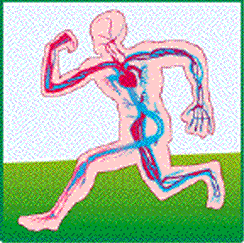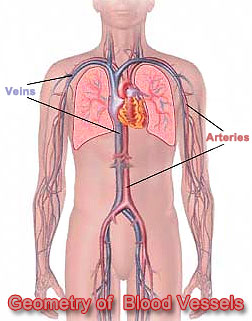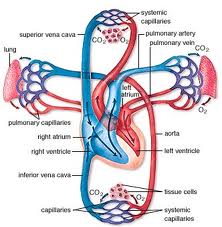
Our body is made up of certain cells and tissues that help in maintaining the balance of the heart, blood and the capillaries with the rest of the body. It is the blood that travels continually through the Circulatory System. The Heart, Lungs and the Blood Vessels together form a part of the Circulatory System. Without the Circulatory System, it would be difficult for the body to fight diseases or maintain a stable internal environment.
The Circulatory System, also known as Cardiovascular System, form a network of organs, which is made up of three independent systems that work together. It is the Circulatory System that is responsible for the flow of blood, nutrients, oxygen and other gases, and hormones to and from cells. The independent systems that work together are the heart (Cardiovascular), lungs (pulmonary) and the arteries, veins and coronary (Systemic). The Circulatory System transports dissolved material, nutrients, water and oxygen and releases wastes from the body like the carbon dioxide. It acts as a highway that connects all the body cells.

The important component of the Circulatory System includes the heart, blood and blood vessels.
-
Heart: The Heart, located in the centre of the body, is about the size of the fist and is a muscle that beats about three billion times in an average lifetime. It is the function of the heart to pump the oxygenated blood to the body and deoxygenated blood to the lungs. For each circulation, there is one atrium and one ventricle. There are four chambers in the heart, namely, left atrium, left ventricle, right atrium and right ventricle.
-
Blood: Blood is made up of liquids, solids and small amounts of oxygen and carbon dioxide. It travels through thousands of miles of blood vessels pumped by the heart. The blood cells involve the Red Blood Cells (erythrocytes), Haemoglobin, White Blood Cells (leukocytes), Platelets (thrombocytes) and Plasma.
Blood Vessels: The blood vessels include:
-
Arteries: Arteries are responsible for carrying oxygen-rich blood away from the heart.
-
Capillaries: These are thin tiny blood vessels on the head. Capillaries act as a link between the arteries and the veins. They are responsible to pass out the wastes from the blood through the capillary walls.
-
Veins: Unlike arteries, veins carry the blood back to the heart.

The three independent systems are as under:
-
Pulmonary Circulation: Pulmonary Circulation moves the blood from the heart to the lungs and again back to the heart. The veins enter the right atrium through the large veins called venae cavae and bring the waste blood back to the heart. The right atrium then fills the waste blood and later pushes it through a one-way valve into the right ventricle. The right ventricle then contracts and pushes the blood into the Pulmonary artery. The Pulmonary artery in the lung capillaries exchanges the carbon dioxide and oxygen. The fresh oxygen re-enters through the left atrium and the Pulmonary veins and then returns to the heart.
-
Coronary Circulation: Coronary Circulation relates to the movement of blood through the tissues of the heart. The myocardium, which is a heart muscle is provided the blood supply by the Coronary Circulatory System. It comes from the aorta by the two coronary arteries that are to the left and the right side of the heart.
-
Systemic Circulation: It circulates blood to all the parts of the body except the lungs. It transports the oxygenated blood away from the heart to the rest of the body and returns the oxygen depleted blood back to the heart.

The common diseases of the Circulatory System are as follows:
-
Arteriosclerosis: In Arteriosclerosis, the fatty deposits in the arteries thicken the wall. This leads to the accumulation of the cholesterol, fat and calcium. It restricts the blood flow resulting in a heart attack or stroke.
-
Hypertension: It is commonly known as high blood pressure and causes complications like the heart attack, stroke or kidney failure, since the heart works harder.
-
Aortic aneurysm: It occurs when the aorta begins to bulge or eventually tear or is damaged. The bulging or the tearing may lead to internal bleeding. It is generally caused due to atherosclerosis, obesity, high blood pressure, etc.
-
Rheumatic Fever: It is an inflammatory disease which is caused due to bacterial infection. It is caused due to bacteria called Streptococcus. It is generally caused to children and results in cold and cough and sore throat. It affects the joints, the central nervous system which includes the brain, the spinal cord and the heart.


